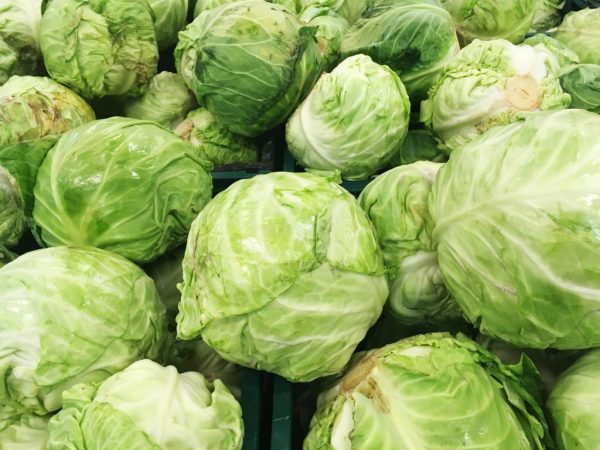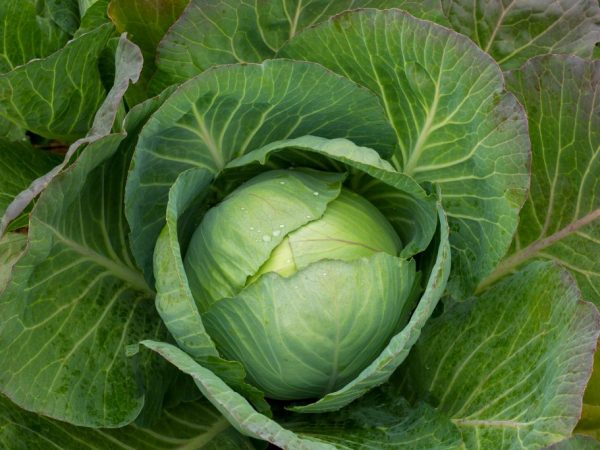Harvesting cabbage
Harvesting cabbage is a laborious process, divided into several stages. If you follow the rules and adhere to the deadlines, the vegetable will retain vitamins and nutrients for the whole winter.

Harvesting cabbage
How to properly collect and store cabbage
In order for the harvested crop to retain its quality throughout the winter, they are harvested at the optimal time and provide the heads of cabbage with proper storage conditions.
Secrets of long-term storage of cabbage:
- Before harvesting, the plants are not watered for 2 weeks, otherwise the keeping quality of the vegetable worsens. There is a danger that the forks will crack while still in the garden.
- Only ripe cabbage is harvested, otherwise the forks dry out ahead of time, and the vegetable itself becomes tasteless and bitter. The approximate collection time is determined based on the recommendations for each variety or hybrid. An unripe vegetable is only suitable for livestock feed.
- A month before harvesting, the cabbage is sprinkled with wood ash. This substance helps scare off slugs that go out in search of food and wintering places. Top dressing should be the last of the season.
- The location for storing the heads should be selected in advance. Its area should be sufficient so that the heads do not lie on top of each other. Also, the room should be dark and cool. Ventilation is imperative, otherwise the plugs will deteriorate. The forks are laid in insulated pits or stored in the cellar.
The best time to harvest
There are no uniform terms for harvesting cabbage. It all depends on the variety and degree of maturity of the vegetable. Harvesting of early varieties of cabbage occurs as the heads of cabbage ripen. Usually this time falls in mid-July. Medium late vegetables are harvested during August and September.
Harvesting times for late species vary, depending on the region:
- in the northern regions - after September 15;
- in the southern and western parts of Siberia - in early October;
- in the middle lane - from October 15.
In areas with longer and warmer autumn, heads of cabbage are harvested even in late October or early November. If the frost comes early, the vegetables are harvested before they naturally thaw.
The best conditions for cleaning are warm and dry days. This is due to the fact that the vegetable must be dried before harvesting for storage. It is better to remove cabbage from the garden after lowering the average daily temperature to 7 ° C. It is also allowed to harvest late varieties with the onset of the first frost, but in this case there is a risk that the cabbage will be stored less.
It is believed that the best time to pick a vegetable is during the waning moon, i.e. from 16 to 26 lunar day. The best hours and days for harvesting are determined using the horticultural lunar calendar. Suitable days for harvesting are days under the sign of Capricorn, Libra or Sagittarius. Work is avoided on days when the Moon is in Pisces or Aries.
Fixtures and mechanisms
It is better to harvest ripe cabbage manually. Usually the heads of cabbage are pulled out together to the stumps.As soon as the leaves on the heads wilt, the heads of cabbage are cut off.
Basic inventory for picking cabbage by hand:
- for digging in bushes - a pitchfork or a shovel;
- for chopping off heads of cabbage - a knife or a small kitchen ax;
- boxes and bags for harvesting and moving it to storage.
It is also advisable to have a garden wheelbarrow or any other cart: cabbage forks are heavy and need careful transportation.

Cabbage needs careful transportation
When harvesting cabbage mechanically on large beds, it is advisable to use a single-row harvester and semi-automatic conveyors with a loader function. The productivity of cabbage harvesting in this way reaches 0.3 ha / h.
For careful picking of cabbage, comparable to the manual method, automatic lines with electronic process control are used. The list of works of such devices includes digging out plants, pruning leaves, stubs and packing heads.
Cabbage harvesting instructions
The procedure for the classic harvesting of cabbage by hand:
- Dig up the bush with a pitchfork or shovel.
- Grab the cabbage head with your hands and, slightly shaking it from side to side or scrolling in different directions, pull it out of the ground along with the roots.
- Shake off excess soil.
- Place the cabbage carefully on dry ground. It is advisable not to put the head of cabbage where the sun's rays fall, because subsequently condensation and mold form inside the head.
- Dry the crop and then separate the leaves not wrapped in forks.
- Hang the cabbage in a cool room by the stumps.
This is how the harvest is stored throughout the winter. If you plan to clean up the vegetable in the basement, this method will not work: the stump will rot from the inside. Following this, the head of cabbage will deteriorate. In this case, gardeners separate the forks from the roots and leave stubs, the length of which ranges from 5 to 8 cm, depending on the size of the vegetable.
If I put the cabbage for storage out of time due to frost or heavy rains, the heads of cabbage are not pulled out. It is permissible to cut them down with an ax and clean them on the spot to a presentation.
Several forks are left in the garden until frost. It is from such varietal heads of cabbage that the best seeds are subsequently obtained. Hybrid plants are unsuitable for such purposes.
What to do after cleaning
Following the cabbage heads, the remains of the plant are collected: leaves and stumps with roots. If they are left in the beds, then during the winter these parts of the seedlings will become stiff, the soil under them is tightened and becomes unsuitable for spring sowing of seeds or planting seedlings. Also, parts of plants are an excellent refuge for parasites or pests and become foci of infection, which is transmitted by cruciferous plants.
The stubs are cleaned as follows:
- dig in the remains with a pitchfork or a shovel;
- pulled out by hand and stored in heaps;
- separate leaves and rhizomes; the former are sent to feed livestock and poultry, and the latter are chopped into small pieces and mixed with foliage, manure and sawdust.
After removing the plants, the site is dug up onto the bayonet of a shovel and left, like winter plowing: in large blocks.
Conclusion
If you remove ripe cabbage from the beds according to all the rules, the product will be easy to store for 9 months.

